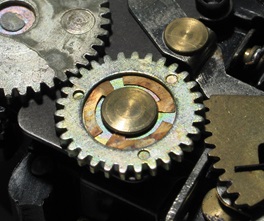
Normally when you purchase equipment or machinery, you would expect the equipment to be safe and comply with all the relevant national and European requirements. Obviously the requirement is upon the person making the equipment available to ensure that they only place compliant and safe ‘products’ on the market. As a consumer, you wouldn’t find yourself going into your local DIY store to buy a new electric drill to then be expected to undertake your own machinery and electrical safety assessment and affix your own CE mark. Where ‘products’ are intended to be supplied/sold to other people then the roles and responsibilities are very clear, however who is responsible when a machine has been built for own use?
Clearly the responsibility must lie with the person who has made the machine, but many people mistakenly believe that ensuring the machine complies with ‘User Legislation’ (such as PUWER98) will be all that is required to allow them to put their machine into use! What most people do not realise is that machines built for own use must also be CE marked!
Where the equipment has an assembly of linked, powered parts and where at least one of them moves for a specific application, then it will be defined as a machine under the Machinery Directive (2006/42/EC). Actually there are seven categories of equipment in all that are covered by the Machinery Directive and it states that “before placing machinery on the market and/or putting it into service, the manufacturer must… affix the CE marking” (along with all of the other CE marking tasks). The key aspect for machines built for own use is whether they are being placed on the market or being put into service.
To place a machine on the market, the manufacturer must be making the machine available with a view for distribution or use and this is whether for reward or free of charge. Generally the act of placing a product on the market involves the product exchanging hands from one company to another person, which is not the case for machines built for own use. So the definition of ‘putting into service’ is very important for machinery built for own use. Luckily it is defined within the Directive which explains that putting into service “means the first use, for its intended purpose, in the Community.” The European Commission’s guide to the Machinery Directive provides further support for this definition and says that whilst persons manufacturing machines for own use have not ‘placed the machine on the market’, they have put the machine into service, which is covered by the Directive and therefore should be CE marked.
The Directive and the European guidance makes it very clear that Machinery built for own use must be CE marked, but the final question that usually raises it head is what’s the benefit of CE marking? Well let’s put the fact that the CE mark is a mandatory legal requirement to one side for just one moment, there are other considerations. For example the CE marking process will help you to design and construct a safe machine, therefore helping you to meet your user legislation requirements. Also non-CE marked machinery could invalidate your insurance policy and that one day the machine may find its way onto the market (i.e. being sold at a later date). Ultimately there is very little choice in the matter; if the equipment is in scope of the Machinery Directive, then it will be required to be CE marked.
If you need support to CE mark machinery that you have built for own use, then please contact the technical team on 01527 595066 to discuss how we can help you.
Source:
– Machinery Directive: http://eur-lex.europa.eu/LexUriServ/LexUriServ.do?uri=OJ:L:2006:157:0024:0086:EN:PDF
– European Guide to the Machinery Directive: http://ec.europa.eu/DocsRoom/documents/9483/attachments/1/translations/en/renditions/native










